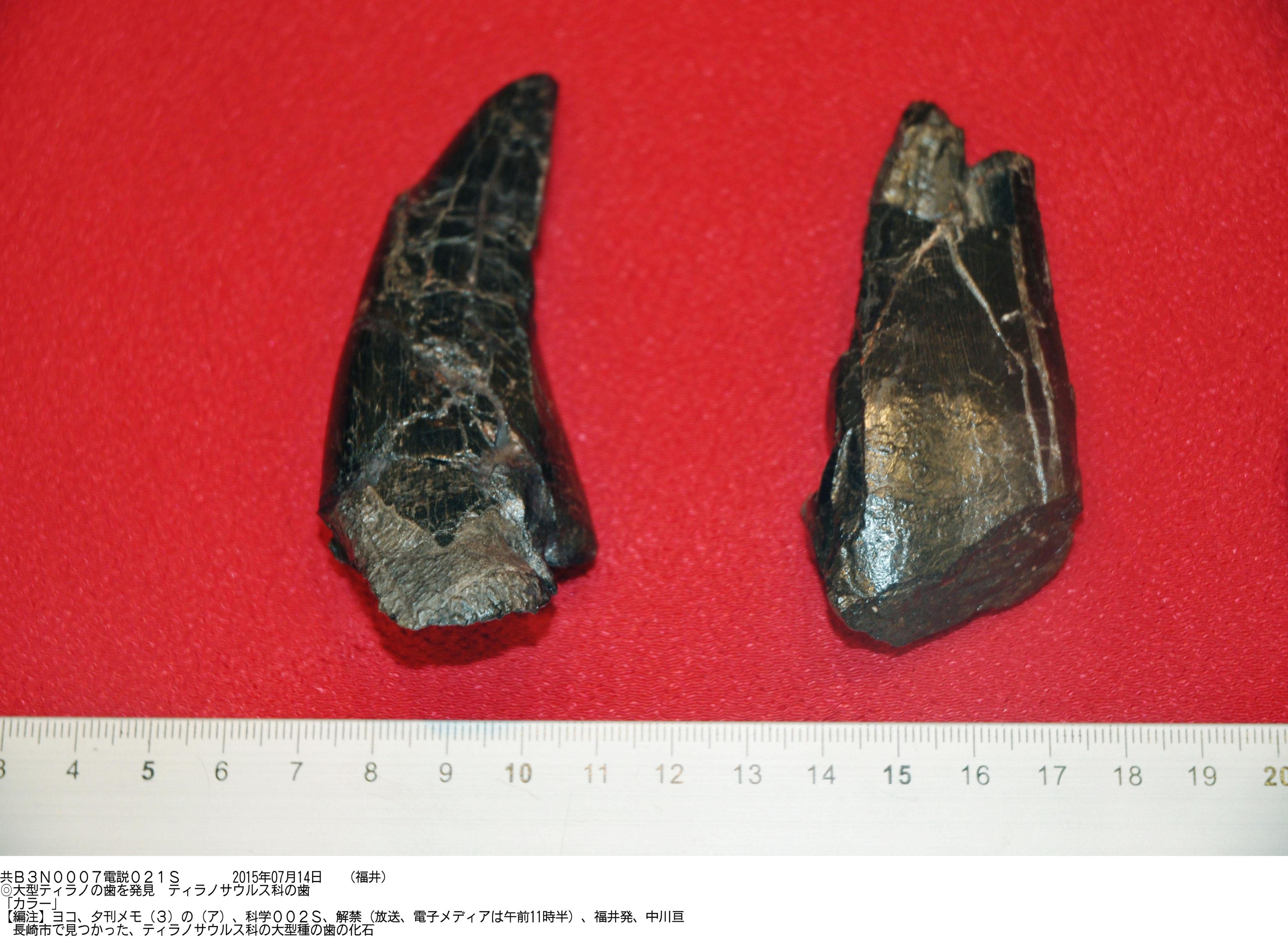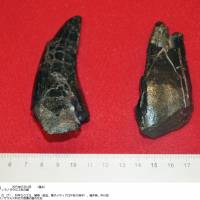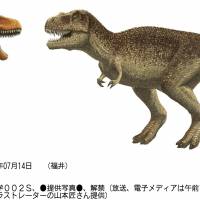Two fossilized teeth of what could be the largest carnivorous dinosaur that ever existed in Japan have been found in a geological layer some 81 million years old in Nagasaki, the city and a Fukui prefectural museum said Tuesday.
The dinosaur, from the Tyrannosauridae family, is thought to have been about 10 meters long. The teeth are the first fossil evidence of it in Japan, according to the Fukui Prefectural Dinosaur Museum.
"Other fossils have been found in Nagasaki as well, leading us to reaffirm that various dinosaurs existed there," said Kazunori Miyata, chief researcher at the museum.
The teeth were unearthed in the same location in May 2014 but whether they belong to the same individual remains unclear, the museum said.
One of the teeth in better condition is 8.2 cm in length and 2.7 cm thick and is likely from the left side of the lower jaw. While the other tooth is chipped and deformed, it could have been larger than the other in its original state, according to the museum.
The fossils will be displayed at the Nagasaki Science Museum, with replicas on view at the Fukui Prefectural Dinosaur Museum from Friday.
Tyrannosauridae dinosaurs are known to have existed in North America and Asia in late Cretaceous Period (83 million to 66 million years ago), ranging in size from 5 meters to over 10 meters from nose to tail.
Makoto Manabe, who heads the research of biotic evolution at the National Museum of Nature and Science, said the latest discovery will provide important data needed in identification. He said the fossil record for large carnivores is poor in Asia compared with that in North America.





